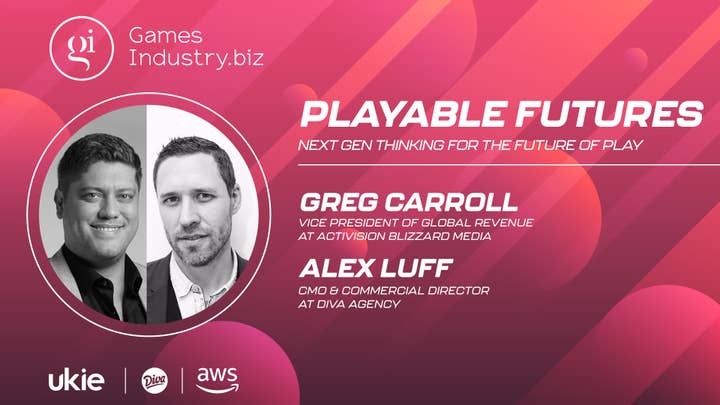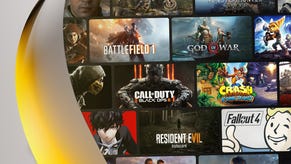Understanding the future of brands place in games | Playable Futures
Brands are looking likely to become ever more present in games. But what does that mean for the medium?
This series of Playable Futures articles considers how the design, technology, people, and theory of video games are informing and influencing the wider world. You can find all previous Playable Futures articles here.
The relationship that video games share with brands and advertising is a long-term one.Early examples such as Coca-Cola's boldly assertive Pepsi Invaders, or Johnson & Johnson's Tooth Protectors – both clones of Atari classics released in 1983 – wrestled with how to represent products and brands within the context of primitive visuals and limited technological muscle. After a rash of less than dazzling games made from the ground up for individual brands, in the 1990s – as games' influence seeped evermore into popular culture – more thoughtfully integrated product placements emerged. A scattering of versions of Sega's arcade icon Crazy Taxi, for example, made outlets like KFC restaurants and Levi's stores into mission goals.
Later still would come Flash games promoting the work of pop stars, the notion of live, updated billboards in game environments, and the complicated ascendance of ads as a means to monetise mobile games.
Surely then, the video game industry now knows its native ads and pop-ups from its banners and non-interruptive audio ads? We might not all have that lexicon at the front of our minds as we enact our work in games, but it's fair to say the conventions of brand promotion are now fairly familiar to the industry. Which, in turn, must mean that the future of ads in games is set. More of the same, right?
"Not anymore," says Greg Carroll, vice president of global revenue at Activision Blizzard Media. "A lot has shifted recently in terms of the relationship between games, brands and consumers, and brands' motivations with ads. COVID was a catalyst to people understanding how important and meaningful this entertainment platform is. Games were particularly important then, because games were a stimulant; not something to consume passively.
"Games also acted as a much-needed point of socialisation during the pandemic, when finding connections with others was profoundly helpful. In that truly difficult time, I think the acceptance of gaming as a valid entity and important part of life was established. We saw that in the investment in game companies and IP, and the interest from consumers. It was hard not to notice, including for brands."
"We really could see games become something of a foundational focus for ad agencies and brands... that will unlock a lot of the potential for games to monetise, reinvest and flourish"
Greg Carroll, Activision Blizzard Media
Brands had long seen games audience sizes continually increase, and that had a base appeal. However, the medium was misunderstood, with dated cliches about its merits and credibility inspiring understandable caution in brands. COVID changed all that. And in the years that preceded the pandemic, a number of trends that have been defining the medium's place in society and culture hit maturity; games as a service, an increasingly demographically diverse audience, and games as venues and social spaces, to name just a few.
"Games have continued to evolve, alongside the shifting global cultural landscape," explains Alex Luff, CMO and commercial director at the gaming-native full service creative outfit Diva Agency. "Games, alongside other forms of interactive and engagement media, now find themselves at the heart of the experiences and places that an increasingly diverse and broad community of people spend time, socialise, and communicate in.
"Brands are steadily switching on to the fact that many, if not most of their audiences and customers are already spending significant time across these virtual spaces. This will continue to have an impact on the relationship between brands and advertising, games, and their shared audiences and communities, in the years to come.
"Today, an increasing community of global marketers are looking beyond a single-minded focus on ROI, and are recognising the long and short-term opportunities to build brand equity alongside driving sales to realise a longer lasting impact on growth. Showing up and connecting a brand in thoughtful ways with audiences across the games landscape, well before they're ready to buy, could prove to be a smart way to build brand engagement and preference, driving growth over the long term."
The challenge for brands is how to establish a presence in games that feels authentic, informed, and relevant. Games, famously, are deeply engaging; a fact that is wildly beguiling for brands. And yet, that means any missteps in this new rich mix of culture and technology have even more potential to backfire.
"The opportunity for advertisers here has shifted, and that will continue at pace," suggests Carroll. "Today it's not necessarily about simply piggybacking on the game's popularity. There might always be a small element of that, but increasingly you can't just slot your brand in and assume players will be happy seeing that, and obediently engage. Instead, you have to understand and share and reward people's passion, and be by their side celebrating the games they love. You need to show you get it, and know the game. But that doesn't mean relearning everything. The future here isn't as alien as some might fear.
"We've done a lot of research around esports, for instance, and what we saw is advertisers who really know traditional sponsoring can do a lot to get things right in this new era. Sponsoring is a very familiar concept, but with esports, sponsorships around teams or players can be much more impactful than a more generic kit sponsorship. That's because a brand can validate players in recognising them – and in understanding their world. So when an esports fan sees Coca-Cola or Budweiser getting behind a player they love, that can be really powerful, and develop brand affection.
"But you have to get it right, which means being careful not to go so far you move into simply taking over fans' beloved content. The increasing opportunity in games is tied with increasing nuance in the medium and the ways audiences engage with that. To seize this opportunity, you increasingly have to put in the time to really know games."
The challenge, then, is to be unmissable in your presence without overstepping a very fine mark. That likely means that we will see more movement in terms of agencies and outfits conceived to specifically foster the new advertising opportunities in games; and a few more hires of gaming talent from outside the industry.
"The opportunity here is in the passion of the gaming audiences, but that means an audience that really knows gaming," Carroll continues. "So we are going to see – and we're already seeing – brands increasingly open ‘head of gaming' roles. We need to see many more experts and gaming specialists and subjects join the client and advertiser side. I think – and hope – that's going to become a normal part of having a brand in the coming years.
"We really could see games become something of a foundational focus for ad agencies and brands. And honestly, that's really exciting to think about, because that will unlock a lot of the potential here, for games to monetise, be able to reinvest into the content and flourish, and for brands to engage audiences."
"Brands are switching on to the fact that most of their customers are spending significant time in virtual spaces"
Alex Luff, Diva
Some might feel inclined to come over a little cynical when pondering notions of ads being more present in games, and that is entirely understandable. Commercial concerns have previously proved their ability to smother creative forms. But this new opportunity does not replace or eradicate other game ecosystems.
Streaming and subscription services can still have a place, and digital storefronts like Steam and Epic's offering aren't looking likely to be going anywhere, meaning a fiercely independent studio can still plot its own publishing and monetisation journey. And as the traditional walled garden platforms increasingly open-up, we will perhaps see more options ahead, rather than less.
There are a lot of reasons to see this as a positive change, with games transcending their traditional medium and becoming the centre of popular culture. From game engines being used to power TV and film production, to game theory being used to inform corporate strategy and game tech helping patients recover from a variety of health challenges, games and the ecosystem surrounding them are increasingly part of our everyday life.
"As a fundamentally creative medium, I think we'll see advertising and brand-building using its creative muscles in fun, clever and increasingly authentic ways, to build, sustain and nourish relationships with people who play games", concludes Luff.
"Ultimately, getting it right is about understanding the need to add value to the gaming experience, not getting in its way. The brands that understand this will be successful in ensuring, like the popular brand ads of yesteryear managed, they can occupy a positive, entertaining place at the heart of youth and consumer culture for years to come."
Playable Futures is a collection of insights, interviews and articles from global games leaders sharing their visions of where the industry will go next. This article series has been brought to you by GamesIndustry.biz, Ukie, and Diva. You can find previous Playable Futures articles and podcasts here.







.jpg?width=291&height=164&fit=crop&quality=80&format=jpg&auto=webp)

